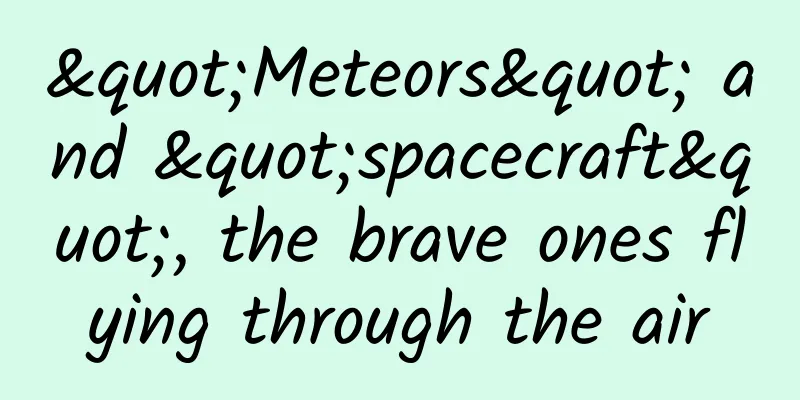"Illustrated Guide to Ancient Chinese Weapons" - 5000 Years of Swords and Blades

|
To achieve true peace You must understand the real war The development of ancient Chinese weapons It is an important part of understanding ancient Chinese wars. Let us follow the footsteps of weapons Explore stories from the past according to Chronology of Wars in Chinese Dynasties Incomplete statistics The largest wars in my country with written records More than 2,000 cases Since the beginning of Chinese civilization War is always around (A battle scene on a drum-shaped shell storage vessel from the Western Han Dynasty. One side seems to have been defeated. Photographer: @马龙颖) ▼ In countless times On the battlefield where fate can be decided People do their best The strongest financial resources For weapons The best craftsmanship For weapons The most advanced technology For weapons (The Sword of Goujian, King of Yue in the Spring and Autumn Period, has only slightly rusted after 2,500 years, which can be regarded as the top level of weapon manufacturing at that time. Photographer @吴沛捷) ▼ 5000 years of glory and disgrace What kind of years have ancient Chinese weapons gone through? What kind of China have we witnessed? 01 Battle of Stone - The first signs of war - Millions of years ago Humans walking towards the wilderness with bare hands Facing an existential threat Learn to use fire to drive away wild animals Use stone tools for production and life The beginning of the rise (Schematic diagram of primitive stone flaking technology, drawn by @Luo Zihan/Planetary Research Institute) ▼ With the wisdom of pioneering About 10,000 years ago Humans began to enter the agricultural age But happier days Did not arrive As productivity continues to increase The rich-poor divide in society And plunder other people's territory and wealth It is far more tempting than producing it yourself Violent conflicts frequently broke out Eventually, different tribes and clans came into being. war (Painted pottery jar with stork, fish and stone axe in the Neolithic Age. The stork and fish on it may be clan totems, and the stone axe next to it is both a weapon and a symbol of power. Photographer: @柳叶氘) ▼ To destroy the enemy To protect yourself The tools in your hands become weapons of war Originally used for fishing and hunting Stone axes, stone balls, stone spears, bows and arrows, etc. Stained with the blood of the same kind (Human bones shot by arrows in the Dawenkou culture. The shot male may be a clan warrior. Image source: @Huitu.com, drawn by @Hanqing/Xingxing Research Institute) ▼ The success or failure of the war It is a matter of life and death for the entire tribe. So it is a tool suitable for fighting Separation from production and strengthening The original weapon Because the material is mainly hard stone Also known as Stone Soldier (Primitive weapons also include clams, bones, horns and other materials; the picture below is a schematic diagram of stone tools unearthed in the primitive period, photographers @Guanzhi, Wu Peijie, map @Hanqing/Planetary Research Institute) ▼ They look rough But it already has deadly lethality Thus, armor for protection was born. The warrior's body is covered with animal skins and vines. This further promoted the improvement of weapons Make the blade thinner and sharper (The rattan armor tribe in Anshun, Guizhou still retains the tradition of making rattan armor, picture source @Visual China, map @Hanqing/Planet Research Institute) ▼ As the saying goes "The winner is the king, the loser is the enemy" With constantly upgraded weapons A clan chieftain who can win every time Accumulated more wealth and prestige Become a special person who stands above others His close family also profited from this Increasing class divisions (At the end of primitive society, the concentration of wealth and religious and secular power led to class differentiation; the picture below shows the figures on the bronze shell storage vessel of the ancient Dian Kingdom in the Western Han Dynasty, including nobles, soldiers, slaves, etc., and the slaves tied on the bronze shell storage vessel of the ancient Dian Kingdom in the Western Han Dynasty. Photographer @苏李欢、观止) ▼ Class differentiation Brought a stronger desire to conquer Legend has it that there were several tribes in China at that time. The Huaxia Group with Huangdi and Yandi as the core Developing along the Yellow River to the North China Plain The Dongyi group headed by Chiyou Developing westward from Shandong About 5000 years ago The Battle of Zhuolu breaks out Huangdi finally captured and killed Chiyou (The image of Chi You on the Han Dynasty brick painting is wearing weapons from head to toe, with a murderous look. Map by @Hanqing/Planetary Research Institute) ▼ Afterwards A war against the Miao barbarians in the south begins The ancestral temples of the defeated were razed to the ground Prisoners of war and their descendants were enslaved for generations On one side is a brutal war On the one hand, it is the integration of tribes About 4000 years ago This land established a documented The earliest country summer (There is still controversy in the academic community about whether Xia existed; illustration of the scope of the Xia Dynasty, drawn by @松楠&罗梓涵/Planetary Research Institute) ▼ To consolidate rule Large numbers of slaves were used to build cities Professional military establishment Specialized weapon formation But only so It is difficult to meet the needs of war With the application of new materials A weapons revolution that has completely changed its appearance Coming soon 02 Bronze War - Battle of Nations - In fact, long before summer People have known and used metals copper (Bronze knife, Majiayao culture, the earliest copper-tin alloy bronze ware discovered in China so far, photographer @器, map @汉青/星球研究院) ▼ It is flexible and not hard enough After several generations of exploration A bronze alloy with tin and lead added Higher hardness and lower melting point Becoming a "high-tech" product and being widely used Shang and Zhou Dynasties The scale of copper casting has expanded unprecedentedly The area of a single copper casting workshop can reach 10,000 square meters The number of bronze artifacts produced doubled (Single mold method and ingredients for bronze ware, drawn by @Luo Zihan/Planetary Research Institute) ▼ As the saying goes "The most important affairs of a country are sacrifice and war" To enhance military strength Bronze technology was quickly used on the battlefield Harder, stronger, and better weapons are emerging Because the material is mainly bronze Also known as Bronze Soldier It can be roughly divided into three types (The above quote is from Zuo Zhuan; the armed forces shown in the Shang Dynasty graphics and texts are provided by @Hanqing/Planetary Research Institute) ▼ The first one is Close combat weapons Like a bronze dagger It evolved from a dagger that was lengthened. The initial manufacturing and maintenance costs are extremely high Mostly worn by noble children (Double swords with sheaths from the Warring States Period, bronze dagger with gold handle from the Warring States Period, photographers @李苏欢、柳叶氘) ▼ With the improvement of technology Only then did it appear for military combat Bronze long sword (The sword-making technology in Wu and Yue regions at that time far surpassed that in the Central Plains; the following pictures show the sword of King Fuchai of Wu and the sword of King Goujian of Yue, photographer @苏李欢) ▼ Bronze Axe Then the blade of the stone axe will be enlarged. Create a wider arc edge This type of structure is also called "Yue (yuè)". (Bronze axes gradually moved away from the category of weapons and became a symbol of royal power; the picture below shows some bronze axes, a copper axe with a cicada pattern, photographers @肖怡宁, 苏李欢, 翟东润, map @汉青/星球研究院) ▼ Bronze dagger used for hooking and pecking Improved the method of attaching the handle to the spear head Improved firmness Increased cutting area (Wu Wangguang Spear, openwork feather pattern spear, photographer @Zhang Yan, Yuan Huanhuan) ▼ The bronze spear There are also many forms Narrow-leaf spearheads are better for stabbing than wide-leaf spearheads (Spear of King Fuchai of Wu, bronze spear of a hanging man, photographer @俆勤、观止) ▼ Even more fantastic is People combined the halberd and the spear to create a bronze halberd. It has both assassination and hooking functions. (The Western Zhou Dynasty "shooting" the halberd, photographer @脉影、柳叶氘) ▼ besides There is also a bronze halberd (pí) that looks like a long sword with a handle. Bamboo wood pole Bronze Shu (shū) with a bronze head at the front, etc. (Shu is a stick-like weapon, and the head of the Shu is generally without a blade; the picture below shows the Shu used by Zenghou, which has a blade at the head. Photographer: @徐勤) ▼ The second is Long-range weapons At this time, arrowheads were made of bronze. Spring and Autumn Period and Warring States Period Crossbows that are easier to aim and more powerful have appeared Depending on the usage It is divided into arm-drawn crossbows that are pulled open by arm strength. And the crossbow that can be pulled open by pedaling (Reconstruction diagram of the Warring States crossbow, drawn by @郑伯蓉&罗梓涵/Planetary Research Institute) ▼ The third is Protective weapons The helmet worn on the head was already cast in bronze The armor they wear In addition to leather, bronze breastplates also appeared. Some "shields" are inlaid with bronze shield decorations (Western Zhou human-faced shield, image source @Huitu.com, map @Hanqing/Planetary Research Institute) ▼ Maybe they are larger Give craftsmen enough creative space There are many eye-catching patterns on it. Such wild designs can enhance one's confidence. It can also deter enemies (In ancient times, soldiers wearing helmets and armor were called "Hu Ben (bēn)"; the picture below is a bronze helmet with animal face pattern, the picture is from @Huitu.com) ▼ at the same time Copper adzes, chisels, cutters and other production tools Increasingly common Promoted the advancement of wood craftsmanship Created another glory of mechanized weapons Chariot Its function is similar to that of today's "tanks" Enter the battlefield due to its powerful mobility The basic unit of the military organization is called "Cheng". (Generally, each "carriage" has about 25 to 75 people; schematic diagram of the chariot and passengers in the Pre-Qin Dynasty, map by @罗梓涵/Planetary Research Institute, bronze wheel hub with inlaid silver cloud pattern, photographer @吴沛捷) ▼ Spring and Autumn Period Chariot warfare is the main form of combat Chariots become the main force Spears, halberds, and daggers became longer due to chariot warfare. Even up to 3 meters When both sides rush Generally use bows and crossbows to shoot at long distances When two cars collide Then use longer weapons to fight When the chariot is destroyed Fight the enemy with sword and shield etc. (The powerful countries at that time were also called "countries with ten thousand chariots"; the picture below is a painted dragon and phoenix lacquer shield from the Warring States period, which is covered with traces of time, and a leather armor from the Warring States period, photographer @徐勤) ▼ About 3000 years ago A famous battle against the tyranny of King Zhou of Shang Battle of Muye This is the earliest recorded chariot battle. King Wu of Zhou's coalition army marched to Muye with 300 chariots The unexpected King Zhou of Shang They had to hastily arm a large number of slaves and prisoners of war to fight Finally, the soldiers turned against their own side. King Zhou of Shang, who was once a brave warrior, was completely disappointed. Suicide after defeat (Li Gui (guǐ) from the Western Zhou Dynasty, the inscription inside the vessel provides an example for verifying the specific time when King Wu defeated King Zhou, photographer @柳叶氘, map @汉青/星球研究院) ▼ The enfeoffment was based on patriarchal blood relations. The ritual and music civilization has reached its peak Zhou Dynasty It was like a dream-like era As the royal family declined, the princes split and divided Also rapidly collapsing (There were hundreds of wars recorded in the Warring States Period; the vassal states in the Spring and Autumn Period are shown in the figure. Map by @松楠&罗梓涵/Planetary Research Institute) ▼ To the end of the Spring and Autumn Period There were more than 100 vassal states. War! War! War! Competition among major powers has become the theme of the times Frequent wars are like a breeding ground for military technology Let everything change First is Expansion of combat space The chariot troops, which were not suitable for complex terrain, gradually declined. Different combat modes spawned by different geographical environments Cavalry battles in the north and naval battles in the south Keep on going (Image rubbing of a bronze kettle with land and water attack patterns from the Warring States Period, bronze kettle with land and water attack patterns, photographer @包浩霖, map @汉青/星球研究院) ▼ followed by The various vassal states expanded their armies crazily Infantry replaced chariots and regained the main position Another reason is that the competition for cities is increasing. The development of siege and defense equipment For example, to observe the enemy Nest car Used to throw stones into the city Trebuchet For climbing the city walls Ladder (Sketch of the Nest Car, Yaksha Ling, drawing by @Luo Zihan/Planetary Research Institute) ▼ The purpose of each country From a simple struggle for hegemony to a massive resource-swallowing The “ritual system” finally became a thing of the past One of the countries is called Qin Reforms are being vigorously implemented One of the reforms was to abolish the hereditary aristocracy system. Implementing the "Military Merit System" This means that ordinary people can You can also gain wealth and honor Excited the people (The Qin green-faced kneeling archer shows the elegance of the Qin army in those days, photographer @张天柱, map @汉青/星球研究院) ▼ 221 BC Qin Shi Huang led his army to sweep across the six kingdoms Ending more than 500 years of chaos Chinese History The first unified dynasty was established (Sketch of the territory of the Qin Dynasty, drawn by @松楠&罗梓涵/Planetary Research Institute) ▼ On the other side A new technological revolution is quietly coming The growing country A new problem has also emerged 03 Steel War - Expanding territory - In the Seven Kingdoms of the Warring States Period When they were competing for the Central Plains A fierce nomadic people rose up in the north Huns To strengthen the northern border During the Warring States Period, rulers built walls Built the greatest Military defense project Great Wall (There are beacon towers standing on the Jinshanling Great Wall, photographer @杨东) ▼ This long stretch of Resisted foreign invasions countless times The loss of money and manpower also accelerated the demise of the Qin Dynasty. The fortresses and passes in the border areas became battlefields Nomads are making a comeback Frequent testing here (The heavy snow in Jiayuguan Pass, Gansu Province, reminds me of Li Bai's "Guanshan Yue" (Moon over the Pass): "No one has ever returned from a battlefield." Photographer @杨东) ▼ Until about 200 BC Early Han Dynasty The Xiongnu invaded Taiyuan from the south Liu Bang personally led an army of more than 300,000 to counterattack However, the Han infantry Very unsuitable for the Xiongnu's mobile cavalry warfare of "galloping and shooting" In the end, they had to make peace with each other In exchange for a short-term stability Becoming a disgrace in people's hearts (War scene on the stone relief of the battle between the Hu and Han peoples, photographer @肖怡宁) ▼ at the same time Another important military mission Weapon smelting It is in full swing But at this time the main smelting material has been replaced by iron Compared with copper Higher iron ore reserves Lower smelting cost and better performance (The jade-handled iron sword from the Western Zhou Dynasty is the earliest artificial iron product discovered in my country. Photographer: @观止, map: @汉青/星球研究院) ▼ Spring and Autumn Period Craftsmen tried to use this material After thousands of experiments Summarizes various methods to control performance Gradually became popular across the country Since the Qin and Han Dynasties The "black technology" of steel smelting is upgraded step by step During the Han Dynasty, more than 40 iron offices were set up across the country. A 1,500-square-meter armory complex was built in Chang'an City Military production capacity has been greatly enhanced (Iron smelting scene on Han Dynasty brick reliefs, drawn by @Hanqing/Planet Research Institute) ▼ Bronze weapons used directly in combat Begins to evolve Iron Soldier And these weapons are meant to suppress the number one enemy The Hun cavalry A large number of long weapons suitable for cavalry charges The cavalry-specific spear can be up to 4 meters long Also called "Ma Shuo" (Han bronze knight holding a spear, photographer @柳叶氘) ▼ Crossbows that can suppress cavalry attacks The lethality continues to increase The powerful crossbow has a range of up to 600 meters What is even more special is The Han Dynasty also launched a new weapon Name Han Ring-headed Sword As the name suggests The handle of this knife has a flat ring Generally more than 70 cm in length Very useful for swinging arms and slashing during cavalry attacks It is the main melee weapon of soldiers. Can be called the ancestor of Chinese swords (Steel knife from the "Yongchu Sixth Year" of the Eastern Han Dynasty, photographer @Guanzhi, map @Hanqing/Planet Research Institute) ▼ The sword that once dominated the world The assassination function is rarely used on horseback The additional process is more complicated Gradually withdraw from the battlefield Facing a powerful killer Protective weapons become more hardcore Like the "fish scale armor" made of countless iron pieces in series A combination of hook and shield The fashionable weapon "hook inlay" that can be used for both attack and defense Also appeared out of nowhere (Due to the change of material, the name of "甲" was gradually changed to "甲" from gold; the picture below is a schematic diagram of the hook inlay shape, drawn by @Hanqing/Xingxing Research Institute, the restoration of the fish scale armor from the tomb of the King of Qi in the Western Han Dynasty, the picture source is @Huitu.com, the photographer is @Sun Yelin) ▼ besides The Han Dynasty also vigorously raised fine horses Introducing cavalry talents from border counties Research cavalry tactics for long-range raids As the saying goes "Maintain troops for a thousand days and deploy them for a moment" 119 BC The decisive battle with the Xiongnu ended with the Han victory The Xiongnu, who suffered heavy losses, began to weaken. The Han army marched straight to Lake Baikal Known in history as the "Battle of Mobei" (The above quote is from "Southern History·Biography of Chen Xuan"; the picture below is a stone sculpture of a horse trampling the Xiongnu in the Western Han Dynasty, photographer @李顺武, map @汉青/星球研究院) ▼ However, the vast northern grasslands Giving birth to extremely tenacious life Several ethnic minorities marched southward one after another Brought countless wars To the early Tang Dynasty The Tang army first defeated the Eastern Turks and destroyed the Xueyantuo Subdue the tribes in northern desert He also attacked the Western Turks and destroyed the Gaochang Kingdom. Only then did it lay the foundation for a vast territory Then came the coming of all nations. The Great Tang Dynasty (Sketch of the territory of the Tang Dynasty, drawn by @松楠&罗梓涵/Planetary Research Institute) ▼ A wider territory It also means more crises Equipment upgrades to increase power At this time, the Tang army was generally equipped with stirrups Cavalry can perform difficult maneuvers such as "hiding on the side of the horse" Large metal discs on the chest and back The "Bright Light Armor" that can dazzle the enemy's eyes has made its debut The Mo Dao used in the army to kill horses It is one of the four major styles of Tang swords. (The crystal cross-embellished iron knife is the only complete Tang sword unearthed in my country so far, drawn by @Hanqing/Xingxing Research Institute, the Northern Qi painted pottery warrior figurine holding a shield, the picture comes from @Huitu.com, the photographers are @柳叶氘、观止) ▼ As early as the Wei and Jin Dynasties Heavy cavalry became a popular weapon on the battlefield Both people and horses are tightly wrapped The charge is terrifying However, due to its poor mobility In the Tang Dynasty, it was mainly changed to light cavalry. The majestic and awe-inspiring "special forces" of ancient times (Northern Wei Dynasty horse-riding warrior terracotta warriors, photographer @刘晓宁) ▼ External defense and expansion are needed Internally, stability maintenance and suppression are needed South China's dense rivers breed water wars Become the second focus besides cavalry warfare Various types of warships emerge in endlessly A huge ship The ship has multiple cabins Even carriages and horses can run on the deck. Like a "water castle" (Restored model of the Sui Dynasty "Wu Ya" warship, picture source @Huitu.com, map @Hanqing/Planet Research Institute) ▼ Lightweight There are long and narrow warships (chōng), etc. Flexible and maneuverable wins with speed The famous Battle of Red Cliffs was fought on both land and water However, both internally and externally After separation and reunion "Great Unification" It has gradually become the will of some people But things don't always go as planned The Five Dynasties and Ten Kingdoms split at the end of the Tang Dynasty The ethnic war is also intensifying And new changes emerge in chaos and crisis The first sprouts 04 War of Firearms - Unified Integration - The war unleashed a bloody storm It also brings diverse culture This diversity drives a myriad of changes Weapons are no exception By the Song and Yuan Dynasties There are already "scimitars" imitating West Asia and North Asia The hidden weapon "Flying Claw" that can be used on horseback The "whip mace" is a striking weapon that can counter armored cavalry There are many strange shapes (Sketch of some weapons in the Song Dynasty, drawn by @Hanqing/Planetary Research Institute) ▼ However, amidst the complexity There is a weapon that appears like a "monster" It uses gunpowder firearm 1240 AD The Mongol cavalry on their crazy westward expedition arrived in Warsaw, Poland Using the firearm "smoke ball" to attack the city The Polish people guarding the city thought they were spraying poison to "drive away monsters" Who could have imagined that this kind of power is so infinite Weapons that will change the world in the future It actually originated from the alchemy furnace of ancient Chinese alchemists. (Gunpowder is a byproduct of "fire alchemy"; schematic diagram of the spread of gunpowder and firearms in ancient times, map by @Song Nan/Planetary Research Institute) ▼ Even more surprising is that The Song Dynasty was known for its poverty and weakness The level of science and technology has reached an unprecedented peak More than 10 types of firearms have been invented. According to performance, it is mainly divided into 3 categories The first It uses the flammable properties of gunpowder Incendiary firearms Such as "poison smoke ball" Can release toxic fumes and cause fires (Imaginary image of a smoke ball of poison from a burning firearm, courtesy of @Hanqing/Planetary Research Institute) ▼ The second It uses intense combustion The volume suddenly expands thousands of times and causes an explosion Explosive firearms Such as "Thunderbolt" The explosion was as loud as thunder and could shake the city walls. It can be called the "hand grenade" of ancient times (Xixia porcelain thorn, photographer @君作刀, Li Peng, map @汉青/Planet Research Institute) ▼ The third It uses the explosive properties of gunpowder to push ammunition Tube-shaped firearms 1259 The "Tuhuoqiang" used by the soldiers and civilians of Shouchun Prefecture in the Southern Song Dynasty It is recognized as the earliest A tubular firearm that uses gunpowder gas to launch a projectile The originator of the world's guns (Shouchun Prefecture is in Shou County, Anhui Province today; illustration of a musket, image source: @Huitu.com, map by @Hanqing/Planet Research Institute) ▼ There is also a Powered by gunpowder gas A reverse thrust side-rod rocket capable of multiple launches at once "A swarm of bees" (“A flock of bees” illustration, drawn by @Luo Zihan/Planetary Research Institute) ▼ When many firearms When the Chinese battlefield sounded Western countries are still unaware of this As Chinese gunpowder and firearms technology spread to the surrounding areas The world is now dominated by physical attacks using cold weapons Finally, a fundamental change occurred (Some guns and cannons are shown, photographers @风沉郁, 包浩霖, map @汉青/星球研究院) ▼ From different countries Soldiers and craftsmen innovate More advanced firearms from Europe were introduced to East Asia For example, the Portuguese merchants introduced the Portuguese Bird gun with high shooting accuracy Longer barrel, more powerful Red Cannon (Sketch by Portuguese, drawn by @Zhang Jing & Han Qing/Planetary Research Institute) ▼ Firearms gradually replaced bows and arrows Become the main long-range weapon in the army "Guangbei siege works" in the Song Dynasty It is the world's first arsenal for large-scale production of military gunpowder. The Ming Dynasty established The world's first new army unit equipped exclusively with firearms "Shenjiying" They cooperate with cavalry and infantry He made great achievements on many battlefields (Schematic diagram of the bird gun unit array, drawn by @Hanqing/Planet Research Institute) ▼ The power of firearms Also shines in water battles The Battle of Poyang Lake between Zhu Yuanzhang and Chen Youliang at the end of the Yuan Dynasty Thousands of warships were dispatched Equipped with flamethrowers, gunpowder burning arrows and many other firearms The Yuan Dynasty's powerful ocean-going fleet Even extended its rule to the South China Sea (The Yuan Dynasty had the largest ruling area in ancient China; the following figure is a schematic diagram of the Yuan Dynasty’s territory, drawn by @松楠&罗梓涵/星球研究院) ▼ To the middle of Ming Dynasty Japanese pirates are rampant along the southeast coast Becoming a major concern on the border The "Qi Family Army" formed by the famous anti-Japanese general Qi Jiguang They often attack with firearms first. (Model reproduction of the Ming Dynasty "Tuen Mun Naval Battle", photographer @Wang Tao, map @Hanqing/Planet Research Institute) ▼ Looking at the other side of the sea The new era of maritime hegemony begins The technological level of European countries Rapid development like a rocket At this time, China Still facing internal and external troubles and turmoil Until 1636 AD The last feudal dynasty of China Qing Dynasty Entering the historical stage (Sketch of the territory of the Qing Dynasty, drawn by @松楠&罗梓涵/Planetary Research Institute) ▼ Unfortunately In the middle and late Ming Dynasty, China's firearms manufacturing reached the highest level. Although the early Qing Dynasty Famous firearms such as the Wucheng Yonggu General Cannon appeared But it basically stagnated in the later period I want the Qing Dynasty to last forever. The country closed itself off from the outside world and refused to keep pace with the Industrial Revolution The emperor who wanted eternal life Taking the outdated horse riding and archery of our ancestors as the standard for a century When the Western ships and guns When the door to China was blown open The Qing army was armed with swords, rattan shields and outdated firearms. Only a lonely courage (Schematic diagram of the Opium War, image source @Visual China, map @Hanqing/Planet Research Institute) ▼ So far The curtain falls on ancient Chinese weapons The curtain rises on China’s modern history After the 1860s A large number of military enterprises have emerged Like a flash of light 1888 China established its first modern naval fleet Beiyang Navy This navy Once known as the strongest fleet in Asia But as the court became corrupt Development has stagnated again Until a war broke out in 1894 It's too late This is the famous Sino-Japanese War (Please watch in horizontal mode, schematic diagram of the route of the Sino-Japanese War of 1894-1895, map by @松楠/Planetary Research Institute) ▼ Weak military strength The Qing Dynasty was in chaos Under the fierce attack of the Japanese army, they were unable to resist Ding Ruchang, the Beiyang Admiral Committed suicide by taking poison for refusing to surrender Liu Buchan, Vice Admiral of Beiyang He committed suicide because of the loss of his ship. Deng Shichang, captain of the Beiyang Zhiyuan After running out of ammunition and food, he led his ship to ram the enemy ship Suicide by drowning with dog Beiyang Fleet was completely destroyed Since then, the Chinese nation After countless hardships and humiliations With the bodies of countless people of noble character and lofty ideals With the blood and tears of countless Chinese people Only then did it rise again in the world 05 end 1964 China's first atomic bomb exploded successfully 1967 China's first hydrogen bomb exploded successfully 1970 China's first nuclear submarine launched 1980 China's Dongfeng-5 intercontinental missile test launch was successful 2017 China's first domestically-built aircraft carrier launched in Dalian now China's national defense strength has entered the forefront of the world Since the Opium War Just over a hundred years of technological development The "Golden Swords and Iron Horses" that lasted for thousands of years Becoming more blurred (Most of the weapons held by Qin Shihuang's Terracotta Warriors had disappeared without a trace when they were unearthed. Photographer: @张天柱) ▼ However, the power they possess Still cleansing people's hearts This land has experienced many battles That is (Du Mu's "Red Cliff") ▼ "The broken halberd has sunk into the sand, but the iron has not yet been corroded. I will polish it and recognize the past dynasty." Experienced the peak of prosperity That is (Wang Changling, "Joining the Army") ▼ "I will wear my golden armor after a hundred battles in the yellow sand, and I will not return until I have conquered Loulan." After going through ups and downs That is (Lu You, "November 4th, the wind and rain were strong") ▼ "Lying in bed late at night listening to the wind and rain, I dreamed of iron horses on an icy river." This is also our past Flowing with hatred, suffering and fighting It also flows with perseverance, sacrifice and struggle If you want to find them Just like China's 5000-year-old magic weapon Reflecting those times (The cold ancient weapons hide the passionate lives of ancient kings, generals, and unknown people. Photographer @苏李欢) ▼ This article was created by Written by: Zhou Heping Image: Daytime sleep map: Songnan Design: Luo Zihan Hanqing Proofreading: Wang Changchun, A Shao, Chen Jingyi Head Photographer: Su Lihuan Expert review School of History and Culture, Henan University Professor Zhang Lidong ps Some of the weapons shown in the pictures are ceremonial weapons. Because they are better protected underground, they have become a microcosm for us to peek into ancient Chinese wars. Thousands of years of war and conquest are a history written with the blood of tens of millions of people, and this cruel period will become a mirror, constantly alerting the hearts of all people in the future. 【References】 [1] Zhou Wei. History of Chinese Weapons[M]. Beijing: China Friendship Publishing Company, 2015.09. [2] Yang Hong. Collection of Essays on Ancient Chinese Weapons[M]. Beijing: Cultural Relics Publishing House, June 1980. [3] Sun Ji. Ancient Chinese Material Culture[M]. Beijing: Zhonghua Book Company, 2014.07. [4] Tian Zhaolin. A History of Chinese Wars[M]. Nanjing: Jiangsu People's Publishing House, February 2019. [5] Wang Zhaochun. History of Chinese Firearms[M]. Beijing: Military Science Press, 1991. [6] Li Boqian et al. Bronze Ware and the Chinese Bronze Age[M]. University of Science and Technology of China Press, 2018.4. [7] Qiang Zhonghua. Research on the application of gunpowder in the Song Dynasty[D]. Shanghai Normal University, 2009. [8] Liao Guoyi. Research on Neolithic Culture in the Middle and Upper Reaches of the Pearl River Basin[D]. Minzu University of China, 2011. Planetary Research Institute Focus on exploring the extreme world from a geographical perspective ···THE END··· |
<<: National Low Carbon Day丨Get N ways to live a low carbon life
>>: Space station construction: It’s easier to get things done with people in the sky
Recommend
Everyone is making cars, but Samsung has no plans to do so
Under the wave of automobile intelligence, many t...
"Perfect Diary" content marketing model!
The rapid popularity of Perfect Diary , a domesti...
The growing pains of WeChat: Where should subscription accounts go?
WeChat has been making a lot of moves recently, e...
In-depth | Talk about the operational strategy of AARRR model in e-commerce marketing activities
The " AARRR Model " is a concept mentio...
Are you okay with the fact that you are digging a hole for yourself every time you promote something?
Before you start promoting a product, you should ...
Why can't the iPhone be made in the U.S.? Jobs gave the answer
If Jobs' attempt to manufacture Apple compute...
The Civic TYPE R special edition concept car may enter the Chinese market in the future
During the 2018 Tokyo Tuning Show, Honda official...
Jie Xiaojie · Popular methods and techniques course videos on short videos
The course is about the techniques and methods of...
Hidden words in the "blind watermark"? This is not the best way to hide information...
In 2007, the rock band Nine Inch Nails released t...
APP offline promotion and operation strategy!
Someone will definitely ask, APP is an online pro...
Building forest "grain depot" to make China's rice bowl more "abundant"
At present, my country's forest area is 231 m...
If Loulan and this car are combined, Highlander will have to give way to the wise.
In the SUV market segment, Nissan's performan...
Analysis plan for information flow advertising channels!
As an information flow optimizer, the most diffic...
There are frequent layoffs in the industry. Is the Internet bubble about to burst?
2016 is coming to an end. When the first day of D...









